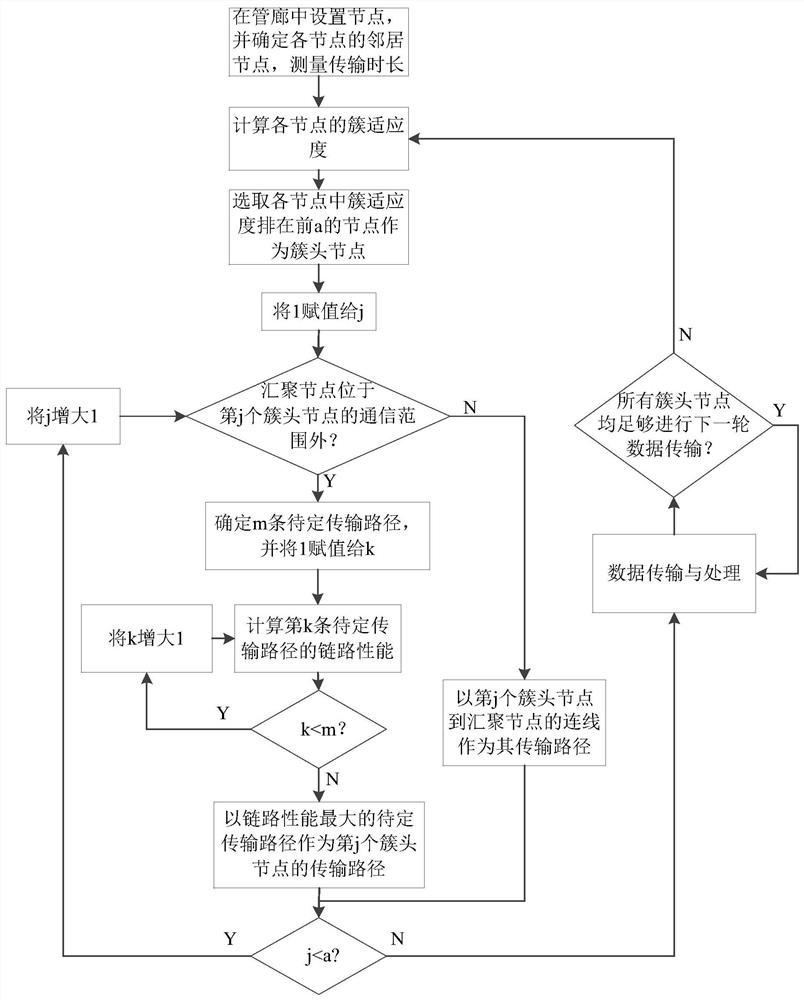Detection method of underground utility corridor based on wireless sensor network
A wireless sensor and underground pipe corridor technology, applied in the field of wireless communication, can solve problems such as prolonging the network life cycle, not considering node positions and remaining energy, and losing node energy, etc., achieving fast and convenient processing speed, accurate and reliable evaluation results, and increased The effect of precision
- Summary
- Abstract
- Description
- Claims
- Application Information
AI Technical Summary
Problems solved by technology
Method used
Image
Examples
Embodiment Construction
[0048] The present invention will be further described below.
[0049] Such as figure 1 As shown, a wireless sensor network detection method for underground pipe gallery, the specific steps are as follows:
[0050] Step 1: Set up converging nodes and n common nodes in the underground pipe gallery. Common nodes are divided into gas sensors (hydrogen sulfide gas sensors are used in this embodiment), pressure sensors, temperature and humidity sensors and smoke sensors. The sink node is the base station for sending, receiving and processing data, and it is located in the center of the underground pipe gallery.
[0051] Traverse all surviving common nodes in the wireless sensor network. Determine the number of neighbor nodes for each common node. If an ordinary node is located within the transmission range of another ordinary node, the two nodes are their respective neighbor nodes. Measure the time required for each ordinary node to transmit data to all its corresponding neigh...
PUM
 Login to View More
Login to View More Abstract
Description
Claims
Application Information
 Login to View More
Login to View More - R&D
- Intellectual Property
- Life Sciences
- Materials
- Tech Scout
- Unparalleled Data Quality
- Higher Quality Content
- 60% Fewer Hallucinations
Browse by: Latest US Patents, China's latest patents, Technical Efficacy Thesaurus, Application Domain, Technology Topic, Popular Technical Reports.
© 2025 PatSnap. All rights reserved.Legal|Privacy policy|Modern Slavery Act Transparency Statement|Sitemap|About US| Contact US: help@patsnap.com



